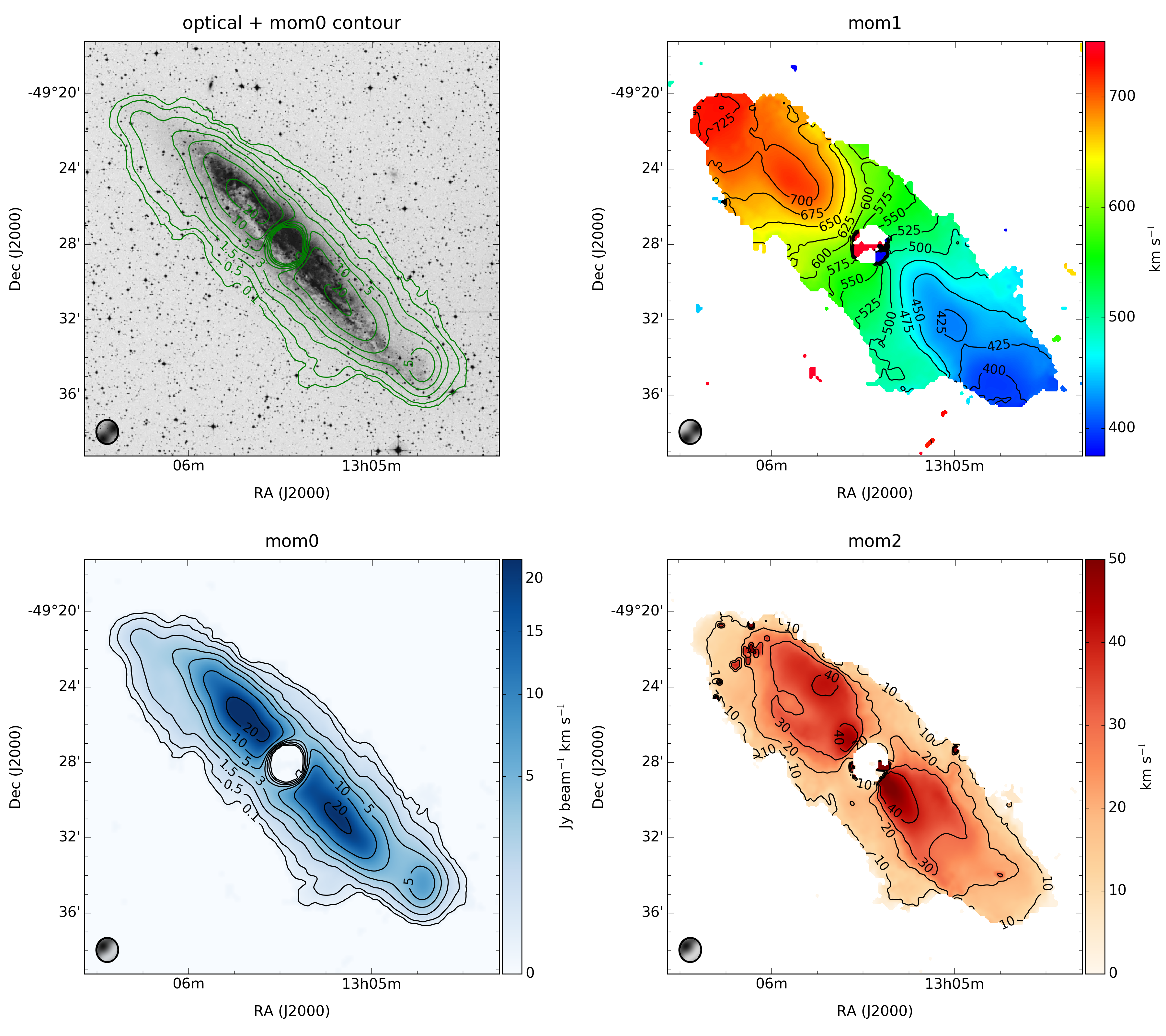NGC 4945

NGC 4945 (HIPASS J1305-49)
is a well-known starburst spriral galaxy (type SBcd) in the Cen A
group. It is oriented close to edge-on, highly obscured in the optical and
located at a TRGB distance of 3.80 Mpc (Mould & Sakai 2008). Its nearest
neighbours are ESO 269-G058 (157.1 arcmin), ES0 269-G?066 (285.1 arcmin;
vhel = 784 km/s) and NGC 5206 (290.2 arcmin); projected distances
are given in brackets. About 7 arcmin north-west of the centre of NGC 4945
lies a faint galaxy, sometimes known as CEN05, but identified to be a distant
spiral galaxy by Bouchard et al. (2004). Early ATCA HI maps of NGC 4945 were
published by Ott et al. (2001). They also map the extended 20-cm radio
continuum emission
of NGC 4945 and estimate a flux density of 4.2 ± 0.1 Jy over the central
source. Consequently, HI absorption dominates in the galaxy core, extending
over ±200 km/s with respect to the systemic velocity. This is similar to
the velocity range of the main HI emission. Here we present HI results
from new ATCA mosaic observations in the EW367 and 750A arrays. The overall
impression is that of a large, symmetric, regularly rotating HI disc, which
does not extend much beyond the bright stellar disc.
Using 3D FAT Kamphuis et al. (2015) obtain an HI rotation curve indicating
vrot = 173.6 km/s at Rmax = 16.7 kpc (for i = 82.8 degr
and PA = 44.2 degr; and Mdyn = 1.2 × 1011
M☉. NGC 4945 has the highest rotational velocity in our
sample. A peculiar HI feature is seen towards the south, possibly extraplanar
gas lagging behind. Combining all the available ATCA HI data will allow a
much more detailed analysis. Using our low-resolution ATCA mosaic we measure
FHI = 405.3 Jy km/s and derive MHI = 1.4 ×
109 M☉. This is ~20% higher than the HIPASS
FHI, which is significantly affected by HI absorption (Koribalski
et al. 2004).
Bouchard et al. (2007) obtained HI observations for 18 dwarf galaxies in the
Cen A Group. They detect five galaxies (ESO 269-G037, CEN06, UGCA 365, ESO
384-G016 and ESO 272-G025) with the ATCA and quote upper limits for the
remaining galaxies. For the dE galaxy ESO 269-G?066 (KK 190; DTRGB
= 3.82 ± 0.26 Mpc; Karachentsev et al. 2007), which was observed with
the 64-m Parkes telescope for over 10 h, Bouchard et al. (2007) give an upper
limit of FHI = 0.026 Jy km/s. This corresponds to an MHI
limit of ~9 × 104 M☉. In the vicinity is also
the dwarf galaxy ESO 269-G037 (type dSph or dIrr). Using ATCA HI observations
Bouchard et al. (2007) find vhel = 744 km/s and FHI =
0.14 ± 0.02 Jy km/s. The latter corresponds to an HI mass of only
4 × 105 M☉ for DTRGB = 3.48
± 0.35 Mpc (Karachentsev et al. 2002).
Reference:
Koribalski et al. 2018
* LVHIS database
* LVHIS homepage
* next